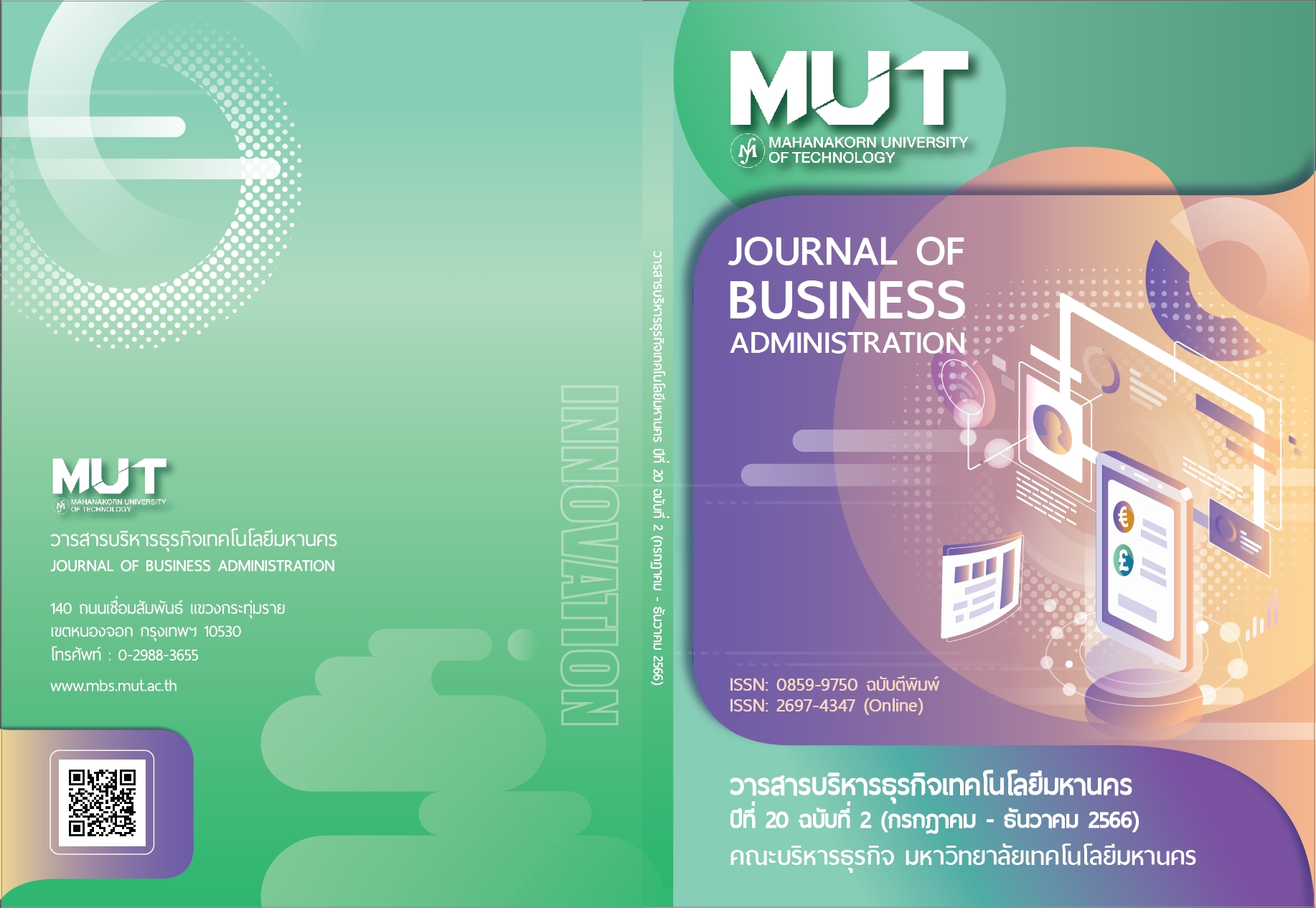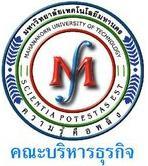Effects of Audit Professional Skepticism on Audit Efficency and Audir Success
Keywords:
Audit Professional Skepticism, Audit Efficiency, Audit Success, Computer-Assisted Audit Tools and TechniquesAbstract
This study aimed to examine the impact of audit professional skepticism on the success of Certified Public Accountants (CPAs) in Thailand through the mediating effects of audit efficiency and computer-assisted audit tools and techniques (CAATs), and the moderating effect of audit professional skepticism on audit efficiency. A total of 610 CPAs were chosen as the sample, and the data were collected. The results of the path coefficients and hypothesis testing showed that audit professional skepticism played a positive significant role in determining and driving audit efficiency. Audit efficiency also positively affected audit success; thus, audit professional skepticism indirectly impacted audit success. Additionally, audit efficiency was a mediator of audit professional skepticism–success relationships in this study. However, computer-assisted audit tools and techniques were moderators, and the coefficient of interaction between audit professional skepticism and computer-assisted audit tools and techniques had a positive significant effect on audit efficiency.
References
Aaker, D. A., Kumar, V. and Day, G. S. 2001. Marketing Research. New York: John Wiley and Sons.
American Institute of Certified Public Accountants (AICPA). 2011. PCPS CPA firm top issues survey commentary. AICPA. New York. NY.
Anagnostopoulou, S. C. and Tsekrekos, A. E. 2017. The effect of financial leverage on real and accrual-based earnings management. Accounting and Business Research. Vol. 47. No. 2. 191 – 236. doi:10.1080/00014788.2016.1204217
Armstrong, S.J., and Overton, T.S. 1977. Estimating non-response bias in mail surveys. Journal of Marketing Research. Vol. 14. No. 3. 396 - 402.
Baker, C.R., Bédard, J., Hauret, C.P.D. 2014. The regulation of statutory auditing: An institutional theory approach. Managerial Auditing Journal. Vol. 29. No. 5. 371 - 394.
BBC. 2018. Four accused of £1.3m Bermuda government fraud. Retrieved July 25, 2022 from www.bbc.com/news/ukwales-42636939
Bierstaker, J., Janvrin, D., Lowe, D.J. 2014. What factors influence auditors’ use of computer-assisted audit techniques? Advances in Accounting, Incorporating Advances in International Accounting. Vol. 30. No. 1. 67 - 74.
Bol, J.C., Estep, C., Moers, F., Peecher, M. 2018. The Role of Tacit Knowledge in Auditor Expertise and Human Capital Development. Journal of Accounting Research. Vol. 56. No. 4. 1205 - 1252.
Carpenter, T.D. and Reimers, J.L. 2013. Professional Skepticism: The Effects of a Partner's Influence and the Level of Fraud Indicators on Auditors' Fraud Judgments and Actions. Behavioral Research in Accounting. Vol. 25. 45 - 69.
Chang, Y.-T., Chen, H., Cheng, R.K., Chi, W. 2019. The impact of internal audit attributes on the effectiveness of internal control over operations and compliance. Journal of Contemporary Accounting and Economics. Vol. 15. No. 1. 1 - 19.
Chen, C., Lin, C. and Lin, Y. 2021. Audit partner tenure, audit firm tenure, and discretionary accruals: Does long auditor tenure impair earnings quality? Contemporary Accounting Research. Vol. 25. 415 – 445.
Coderre, D.G. 2009. Computer Aided Fraud Prevention and Detection: A Step by Step Guide. John Wiley and Sons Inc.. Hoboken: New Jersey.
Cohen, J.R., Dalton, D.W., Harp, N.L. 2017. Neutral and presumptive doubt perspectives of professional skepticism and auditor job outcomes. Accounting, Organizations and Society. Vol. 62. 1 - 20.
Cowton, C.J. 2009. Accounting and the ethics challenge: Remembering the professional body. Accounting and Business Research. Vol. 39. (3). 177 - 189.
DeAngelo, LE. 1981. Auditor independence, "lowballing," and disclosure regulation. Journal of Accounting and Economics. Vol. 3. No. 2. 113 - 127. Retrieved November 8, 2022 from https://doi.org/10.1016/0165-4101(81)90009-4
DeZoort, F.T., Hermanson, D.R. and Houston, R.W. 2008. Audit committee member support for proposed audit adjustments: pre-SOX versus post-SOX judgments. Auditing: A Journal of Practice and Theory. Vol. 27. No. 1. 85 - 104.
Dias, C. and Marques, R. P. 2018. The use of computer-assisted audit tools and techniques by Portuguese internal auditors. 2018 13th Iberian Conference on Information Systems and Technologies (CISTI). 1 – 7.
Dickey, G., Bell, R.G. and Beldona, S. 2022. An empirical evaluation of future auditors in the U.S.A. and India using the trifurcated dimensions of trait professional skepticism. Managerial Auditing Journal. Vol. 37. No. 6. 679 - 699.
Duncan, R.B. 1972. The Characteristics of Organizational Environments and Perceived Environmental Uncertainty. Administrative Science Quarterly. Vol. 17. No. 3. 313.
Federation of Accounting Profession (FAP). 2012. International Accounting Standard. Retrieved February, 25 2021 from https://www.tfac.or.th/upload/9414/ep3CIM1pv6.pdf
Federation of Accounting Profession (FAP). 2022. CPA Contact List. Retrieved March 3, 2022 from https://eservice.tfac.or.th/fap_registration/cpa-contact-list
Financial Accounting Standards Board (FASB). 1980. Concept Statements. Retrieved March 4, 2022 from https://www.fasb.org/page/PageContent?pageId=/standards/concepts-statements.html
Fisher, J.C. 1998. Contingency theory, management control systems and firm outcomes: Past results and future directions. Behavioral Research in Accounting. Vol. 10. 47 - 64.
Gul, F. A., Wu, D. and Yang, Z. 2013. Do individual auditors affect audit quality? Evidence from archival data. The Accounting Review. Vol. 88. No. 6. 1993 – 2023. doi:10.2308/ accr-50536
Habib, A. and Bhuiyan, M.B.U. 2011. Audit firm industry specialization and the audit report lag. Journal of International Accounting, Auditing and Taxation. Vol. 20. No. 1. 32 - 44.
Hair, J.F., William, B. C., Barry, B.J., Rolph, A.E. and Roanld, T.L. 2006. Multivariate Data Analysis. New York: Pearson Education International.
Hall, J.A. 2010. Information Technology Auditing. 3rd edition. Cengage Learning Inc.
Huang, H., Guo, X., Li, D., Liu, M., Wu, J. and Ren H. 2011. Identification of crucial yeast inhibitors in bio-ethanol and improvement of fermentation at high pH and high total solids. Bioresour Technol. Vol. 102. No. 16. 7486 - 7493.
Hurtt, R.K., Brown-Liburd, H.L., Earley, C.E. and Krishnamoorthy, G. 2013. Research on auditor professional skepticism—literature synthesis and opportunities for future research Auditing: A Journal of Practice and Theory. Vol. 32. 45 - 97.
International Auditing and Assurance Standards Board (IAASB). 2012. International Standard on Auditing (ISA) No. 570 Going Concern. Handbook of International Quality Control, Auditing, Review, Other Assurance, and Related Service Pronouncements.
International Federation of Accountant (IFAC). 2009. The Role of The Professional Accountant in Business. Retrieve July 24, 2022 from https://www.ifac.org/_flysystem/azure-private/publications/files/IGPG-Evaluating-and-Improving-Costing-July-2009.pdf
Kilgore, A., Radich, R. and Harrison, G. 2011. The Relative Importance of Audit Quality Attributes. Australian Accounting Review. Vol. 21. No. 3. 253 - 265.
Kline, P. 1993. Personality: The Psychometric View. Routledge.
Kristian, M. 2019. The Impact of the Use of Computer-Assisted Audit Technique, Professional Ethics, and Motivation on Auditors’ Performance. 8th International Conference on Entrepreneurship and Business Management (ICEBM 2019) UNTAR. Advances in Economics, Business and Management Research. Vol. 145. 177 - 182.
Lacroix, J.S.H., Durocher, S. and Gendron, Y. 2012. The erosion of jurisdiction: Auditing in a market value accounting regime. Critical Perspectives on Accounting. Vol. 23. No. 1. 36 - 53.
Lee, S.P. and Moghavvemi, S. 2015. The dimension of service quality and its impact on customer satisfaction, trust, and loyalty: a case of Malaysian banks. Asian Journal of Business and Accounting. Vol. 8. No. 2. 91 – 121.
Leventis, S., Weetman, P. and Caramanis, C. 2005. Determinants of Audit Report Lag: Some Evidence from the Athens Stock Exchange. International journal of Auditing. Vol. 9. No. 1. 45 - 58.
Lin, S., Pizzini, M., Vargus, M. and Bardhan, I.R. 2011. The role of the internal audit function in the disclosure of material weaknesses. The Accounting Review. Vol. 86. 287 - 323.
Loo, R. and Thorpe, K. 2002. Using reflective learning journals to improve individual and team performance. Team Performance Management. Vol. 8. No. 5/6. 134 - 139.
Lou, N., and Donaldson, L. 2013. Misfits in Organization Design: Information Processing as a Compensatory Mechanism. Journal of Organization Design. Vol. 2. No. 1. 2 - 10.
Mardijuwono, A.W. and Subianto, C. 2018. Independence, professionalism, professional Skepticism: The relation toward the resulting audit quality. Asian Journal of Accounting Research. Vol. 3. No. 1. 61 - 71. Retrieved June 11, 2022 from
https://doi.org/10.1108/AJAR-06-2018-0009
Montani, F., Courcy, F. and Vandenberghe, C. 2017. Innovating under stress: The role of commitment and leader-member exchange. Journal of Business Research. Vol. 77. 1 – 13.
Nelson, M.W. 2009. A model and literature review of professional skepticism in auditing. Auditing: A Journal of Practice and Theory. Vol. 28. 1 - 34.
Nolder, C.J. and Kadous, K. 2017. Grounding professional skepticism in mindset and attitude theory: a way forward. Suffolk University and Emory University.
Peecher, M., Schwartz, R. and Solomon, I. 2007. It’s all about audit quality: Perspectives on strategic-systems auditing. Accounting, Organizations and Society. Vol. 32. No. 4 - 5. 463 - 485.
Public Company Accounting Oversight Board (PCAOB). 2013. Report on 2007-2010 inspections of domestic firms that audit 100 or fewer public companies. PCAOB, Washington, DC.
Rapley, ET, Robertson, JC and Smith, JL. 2021. The effects of disclosing critical audit matters and auditor tenure on non-professional investors' judgments. Journal of Accounting and Public Policy. Vol. 40. No. 1. 106847. Retrieved Dec 15, 2022 from https://doi.org/10.1016/j.jaccpubpol.2021.106847
Raziūnienė, D. 2018. PROFESSIONAL SKEPTICISM OF THE EXTERNAL AUDITORS: LITERATURE REVIEW. 5th International Multidisciplinary Scientific Conference on Social Sciences and Arts SGEM. 505 - 511.
Ritchie, B. and Khorwatt, E. 2007. The Attitude of Libyan Auditors to Inherent Control Risk Assessment. The British Accounting Review. Vol. 39. 39 - 59.
Rovinelli, R.J. and Hambleton, R.K. 1976. On the use of content specialists in the assessment of criterion-referenced test item validity. Retrieved Dec 15, 2022 from https://files.eric.ed.gov/fultlext/ED121845.pdf
Samagaio, A. and Diogo, T.A. 2022. Effect of Computer Assisted Audit Tools on Corporate Sustainability. Sustainability. Vol. 14. No. 2. 705.
Schelker, M. 2012. Auditor expertise: Evidence from the public sector. Economics Letters. Vol. 116. No. 3. 432 - 435.
Shonhadji, N. and Maulidi, A. 2022. Is it suitable for your local governments?: A contingency theory-based analysis on the use of internal control in thwarting white-collar crime. Journal of Financial Crime. Vol. 29. No. 2. 770 - 786.
Singleton, T. 2006. Generalized audit software: Effective and efficient tool for today’s IT audits. Information Systems Control Journal. 1 - 3.
Sonu, C. H., Choi, A., Lee, J., and Ha, W. 2016. Audit partner’s length of audit experience and audit quality: Evidence from Korea. Asia-Pacific Journal of Accounting and Economics. 1–20. doi:10.1080/16081625.2016.1242428
The Stock of Exchange of Thailand. 2018. Companies/Securities name. Retrieved February 20, 2018 from https://www.set.or.th/th/market/get-quote/stock/
Watts, R. L. and Zimmerman, J. L. 1986. Positive accounting theory. Englewood Cliffs, NJ: Prentice-Hall.
The World Bank. 2017. Annual Report 2017. Retrieved December 2, 2021 from https://thedocs.worldbank.org/en/doc/908481507403754670-0330212017/original/AnnualReport2017WBG.pdf
Zhang, C. 2019. Intelligent Process Automation in Audit. Journal of Emerging Technologies
in Accounting. Vol. 16. No. 20. 1 - 38.
Downloads
Published
Issue
Section
License

This work is licensed under a Creative Commons Attribution-NonCommercial-NoDerivatives 4.0 International License.
ข้อความ ข้อคิดเห็น ข้อมูล เนื้อหา รูปภาพ แผนภูมิ แผนผัง เป็นต้น ที่ปรากฏและแสดงในบทความต่างๆ ในวารสารบริหารธุรกิจเทคโนโลยีมหานคร ถือเป็นความรับผิดชอบโดยตรงของผู้เขียนบทความนั้นๆ มิใช่เป็นความรับผิดชอบใดๆ ของวารสารบริหารธุรกิจเทคโนโลยีมหานคร และมหาวิทยาลัยเทคโนโลยีมหานคร
บทความที่ตีพิมพ์ในวารสารบริหารธุรกิจเทคโนโลยีมหานคร ถือเป็นลิขสิทธิ์เฉพาะของคณะบริหารธุรกิจ มหาวิทยาลัยเทคโนโลยีมหานคร หากบุคคลหรือหน่วยงานใดต้องการนำทั้งหมดหรือส่วนใดส่วนหนึ่งไปเผยแพร่ต่อหรือเพื่อกระทำการใดๆ จะต้องได้รับการอนุญาตเป็นลายลักษณ์อักษรจากคณะบริหารธุรกิจ มหาวิทยาลัยเทคโนโลยีมหานครก่อนเท่านั้น


